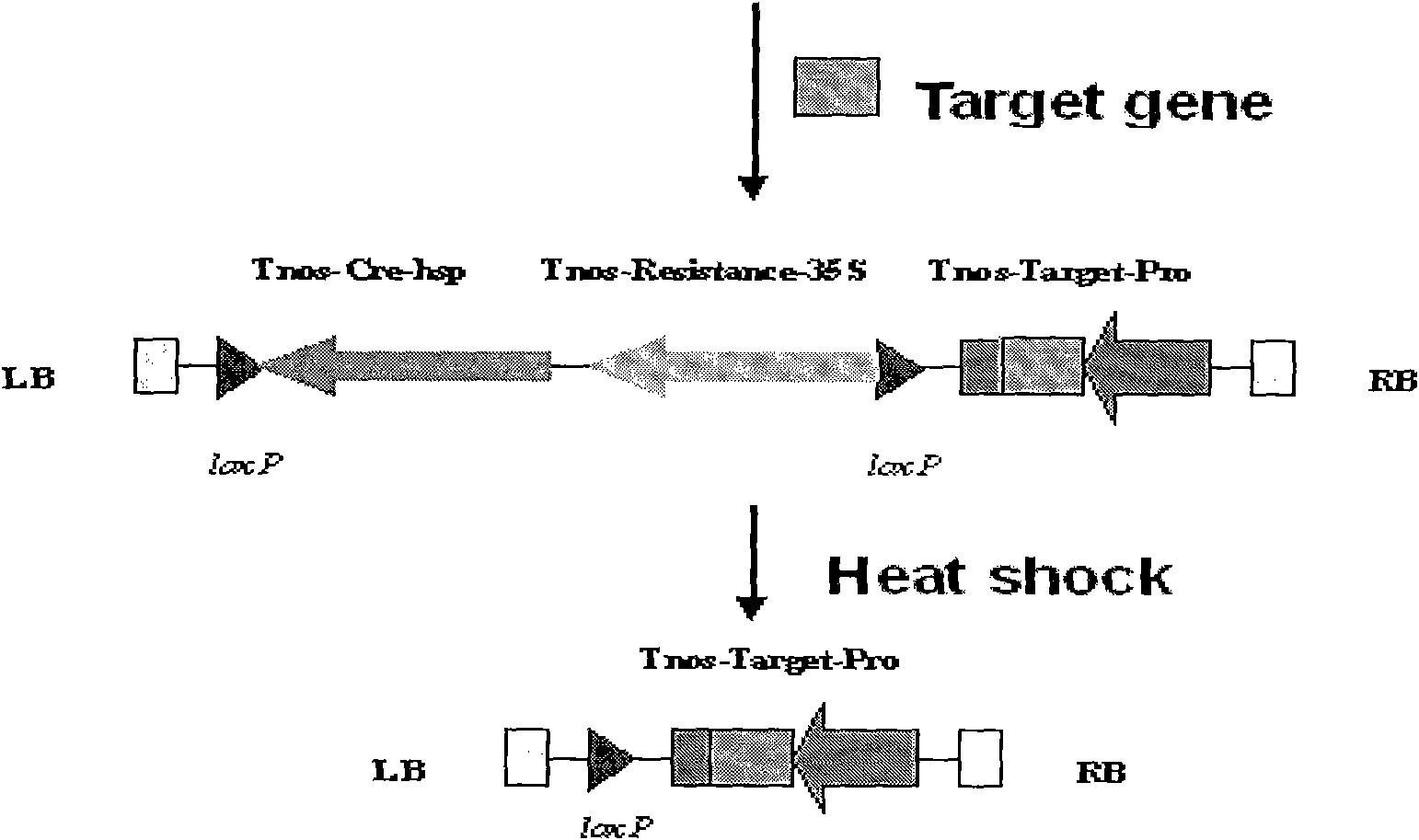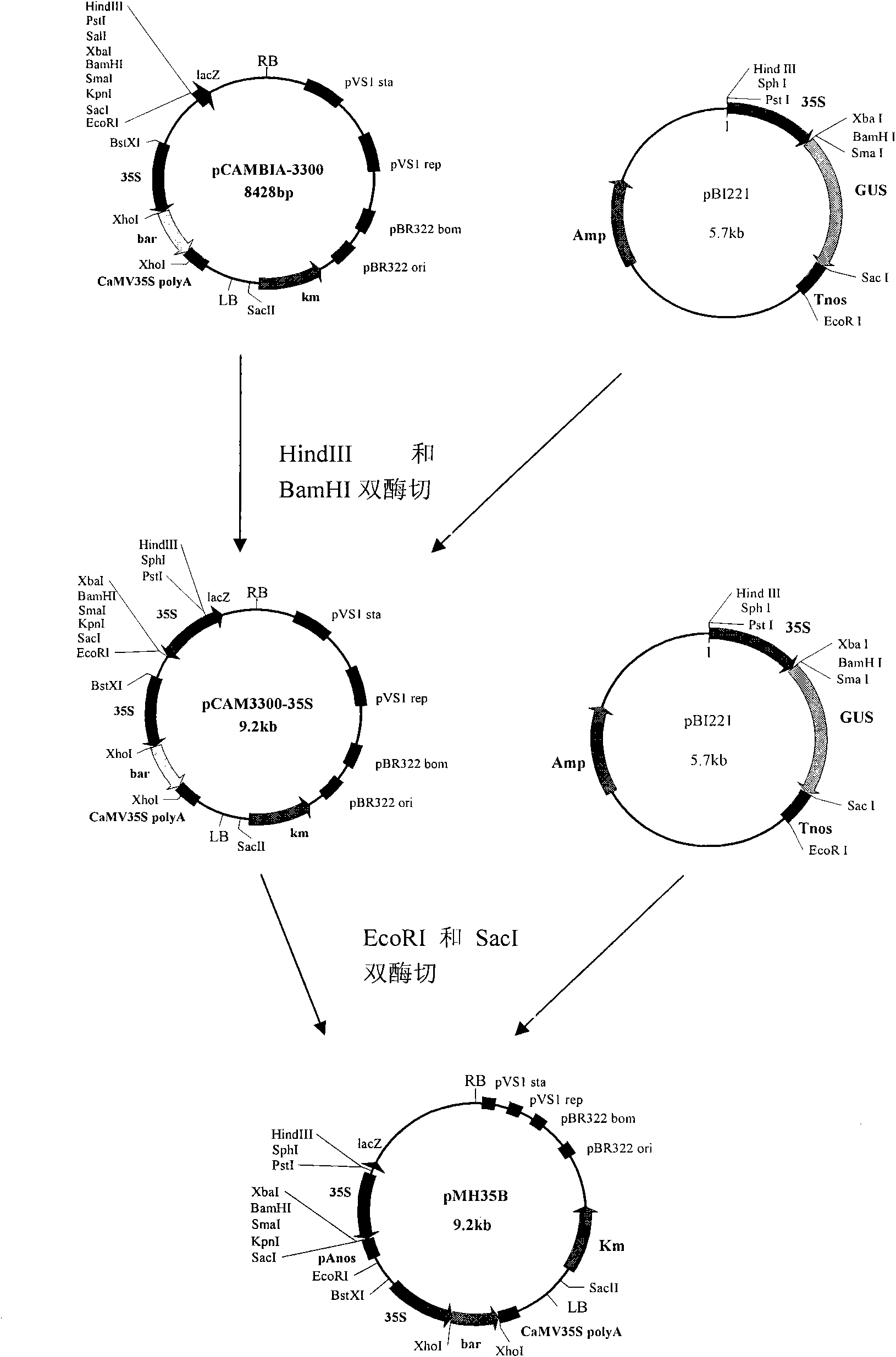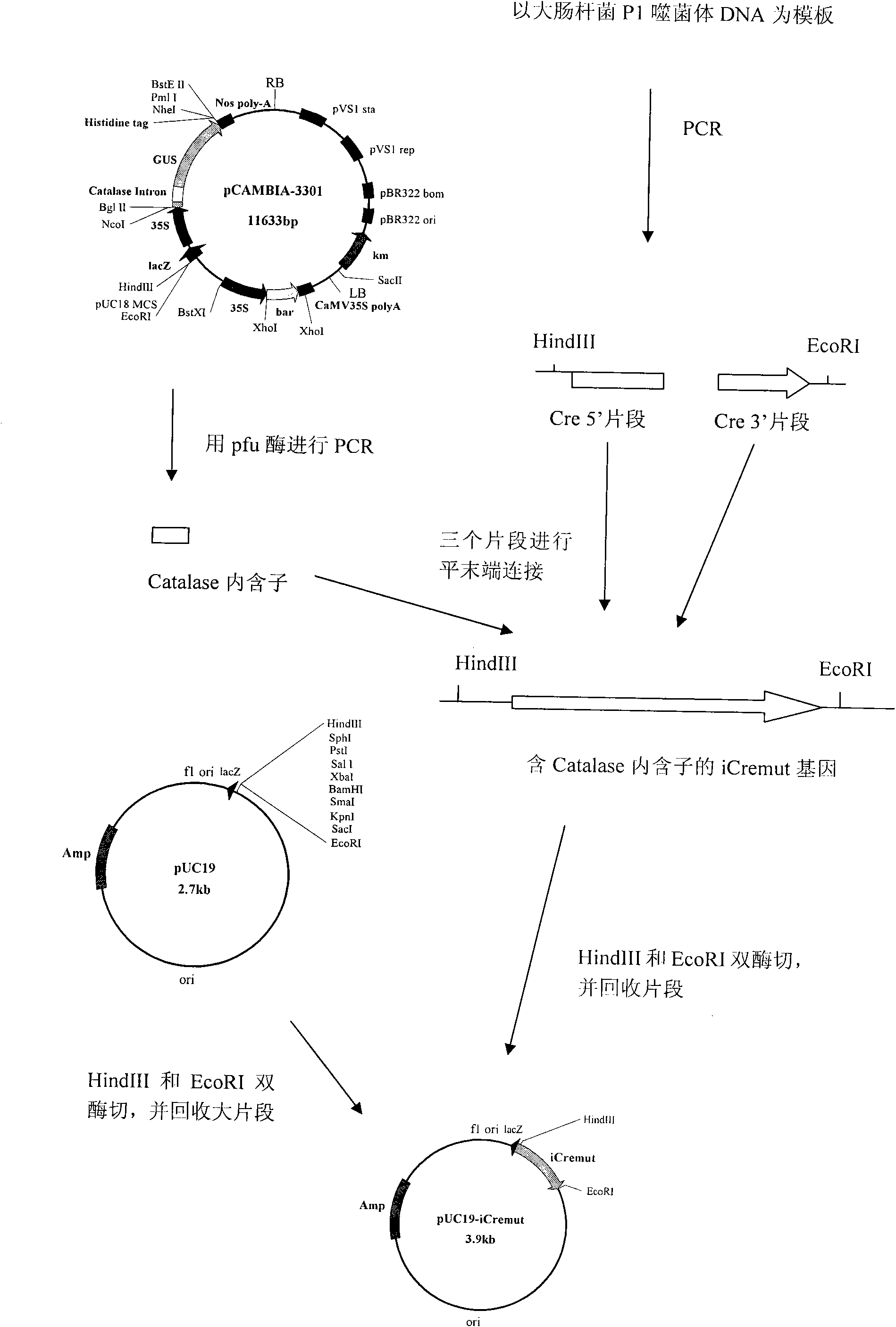Expression vector capable of efficiently deleting selectable marker gene of transgenic plant and construction method thereof
A technology of transgenic plants and selectable markers, applied in the field of plant genetic engineering, can solve the problems of cell variation, complicated operation, loss, etc.
- Summary
- Abstract
- Description
- Claims
- Application Information
AI Technical Summary
Problems solved by technology
Method used
Image
Examples
preparation example Construction
[0099] 4) Preparation of E. coli competent cells-CaCl 2 law
[0100] ①Pick a fresh single colony of E.coli DH5α and inoculate it in LB liquid medium and cultivate it overnight at 37°C;
[0101] ②Inoculate the bacterial solution into fresh LB liquid medium at a ratio of 1:50, incubate at 37°C for 1-2h, to OD 600 About 0.4
[0102] ③Bacterial liquid is ice-bathed for 15 minutes, and aliquoted into small centrifuge tubes; centrifuged at 5,000 rpm 4°C for 3 minutes to collect cells;
[0103] ④ Resuspend the cells in 1ml of pre-chilled 0.1M CaCl 2 In the ice bath for 30 min; centrifuge at 5,000 rpm 4°C for 3 min to collect the cells;
[0104] ⑤Use 100μl of pre-cooled 0.1M CaCl 2 Resuspend the cell pellet and use it within 12-24 hours for the highest transformation efficiency; if it needs to be stored, add glycerol to a final concentration of 20% or 7% DMSO and store in a refrigerator at -70°C.
[0105] 5) Transformation of bacteria
[0106] ① Take 100μl of competent cells and 5μl of ligation p...
Embodiment 1
[0113] Example 1 Plant expression vector pHIMES-SuH and its construction method
[0114] For the construction method of plant expression vector pHIMES-SuH, see Figure 2A-2K , Using the above-mentioned conventional molecular biology methods, specifically:
[0115] 1) Double digestion of plasmids pCAMBIA3300 and pBI221 with HindIII and BamHI, insert 35S promoter into pCAMBIA3300 with ligase to obtain pCAMBIA3300-35S; then double digest pCAMBIA3300-35S and pBI221 with EcoRI and SacI, and terminate Tnos with ligase Insert pCAM3300-35S to obtain pMH35B;
[0116] 2) Using plasmid pCAMBIA3301 as a template, PCR amplification of Catalase introns with pfu enzyme; PCR amplification of Cre5' fragments and Cre3' fragments using E. coli P1 phage DNA as a template; Catalase introns and Cre5 with ligase The'fragment and the Cre3' fragment were ligated to form the iCremut gene containing the Catalase intron; the vector pUC19 and the iCremut gene containing the Catalase intron were digested with Hi...
Embodiment 2
[0126] Example 2 Plant expression vector pHIMES-SuB and its construction method
[0127] For the construction method of plant expression vector pHIMES-SuB, see image 3 , Using the above-mentioned conventional molecular biology methods, specifically:
[0128] The intermediate vector pHIMES-SuH was cut with XhoI to recover large fragments; the vector pCAMBIA3300 was cut with XhoI to recover small fragments; the hptII resistance gene in pHIMES-SuH was replaced with the bar resistance gene to obtain the final plant expression vector pHIMES -SuB.
PUM
 Login to View More
Login to View More Abstract
Description
Claims
Application Information
 Login to View More
Login to View More - R&D
- Intellectual Property
- Life Sciences
- Materials
- Tech Scout
- Unparalleled Data Quality
- Higher Quality Content
- 60% Fewer Hallucinations
Browse by: Latest US Patents, China's latest patents, Technical Efficacy Thesaurus, Application Domain, Technology Topic, Popular Technical Reports.
© 2025 PatSnap. All rights reserved.Legal|Privacy policy|Modern Slavery Act Transparency Statement|Sitemap|About US| Contact US: help@patsnap.com



